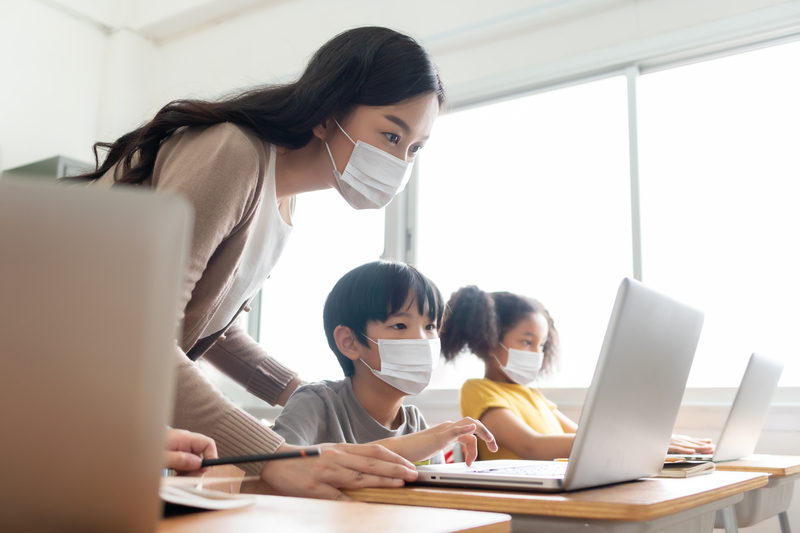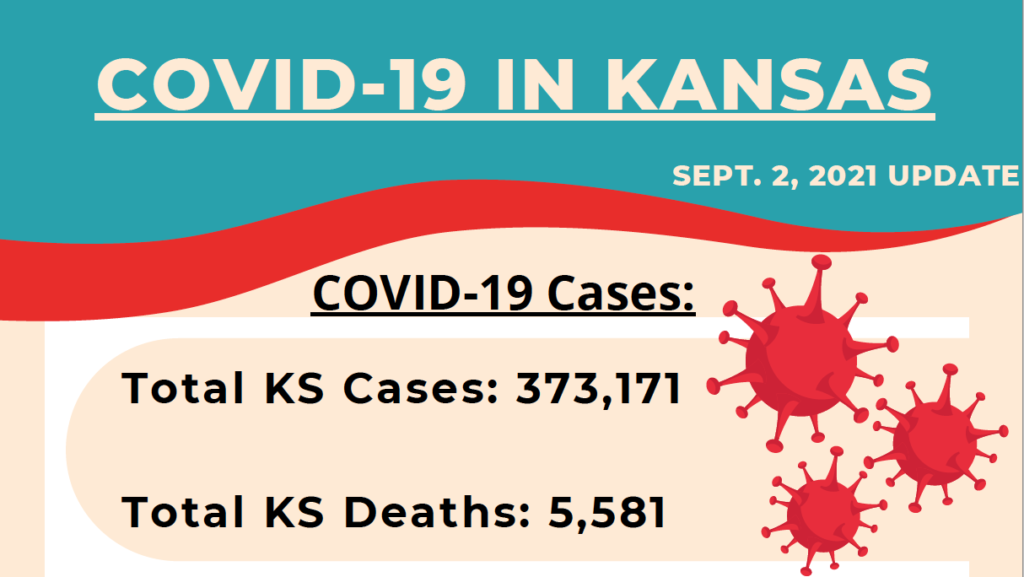Importance of wearing masks to keep kids healthy and schools open
Thoughts on Equity is a blog series presented by the Kansas Health Foundation to feature written, video and audio content from multiple KHF contributors. Through this blog, KHF will discuss issues of equity, systemic racism, health disparities and how Kansans have the opportunity to shape a more equitable and inclusive future.

Importance of wearing masks to keep kids healthy and schools open
Schools across Kansas are facing their third school year of challenges with COVID-19. Many schools shut down in March of 2020 for remote learning, and for the 2020/2021 school year, students were either learning remotely or required to wear masks in person. Today, schools across Kansas are once again struggling to create safe learning environments for all students as the Delta variant rages, young children are ineligible to be vaccinated and adult vaccination rates are lower than desired.
Unfortunately, the debate on masking continues. Yes, we are all tired of masks. However, to stop the spread of disease in schools – possibly leading to school closures – we need to wear masks and get vaccinated (if eligible). Data shows switching to remote learning disproportionately impacts minority and low-income populations who may not have access to internet or the ability to stay home to help their children learn. A Kansas Health Institute report on Kansas internet access showed:
- Overall, three in 10 (29.8% or 884,700) Kansans lacked adequate internet access in 2019 (device availability and high-speed internet connection). Regions with the greatest rates of inadequate internet access included East Central, Southeast and Southwest Kansas.
- Kansans who are non-Hispanic Black or Hispanic were more likely to lack adequate internet access than were non-Hispanic White Kansans (45.6%, 39.8%and 28.5%, respectively).
- One in four (26.7%) Kansas children live in households that lacked adequate internet access, possibly making remote learning difficult for school-aged children.
A December 2020 study by McKinsey & Co. also showed that remote learning “set White students back by one to three months in math, while students of color lost three to five months.” Our teachers and schools worked hard to engage students virtually, but digital challenges, or not having parents at home to help means children were left behind.
There are also significant disparities in how different population groups have been affected by the pandemic. Black and Latino populations experienced more COVID-19 cases, hospitalizations and deaths than Whites. These same Communities of Color were negatively impacted economically when positions were eliminated, or frontline jobs did not allow for remote work. Data from the initial vaccination roll-out also highlights the difficulties in reaching Black and Latino populations, as vaccination rates lagged among Communities of Color. We are also currently seeing low vaccination rates for Kansans under the age of 34, which means our young people are at significant risk of becoming infected with COVID-19.
The following infographic offers a snapshot of the current COVID-19 situation in Kansas. When we look back over time, the spikes in COVID cases look very similar to last fall and winter, and we are just at the first of September! Data helps us see the challenges – and opportunities – we have today. Unfortunately, we do not know the long-term learning impacts or how this might affect our future Kansas workforce or economy.
Wearing a mask is a small sacrifice to ensure our children are safe and healthy. If we can slow the spread of disease, we can keep our schools open so all children have the best opportunity to learn and thrive.
###
Editor’s Note: Infographic data pulled from the Kansas Department of Health and Environment, Sedgwick County, University of Kansas Health System and the Associated Press.
Connect With Us
Sign Up for KHF's Electronic Newsletters
Learn more about the latest Foundation news, grant opportunities, stories and health articles by signing up for KHF’s e-newsletters. Join today!
